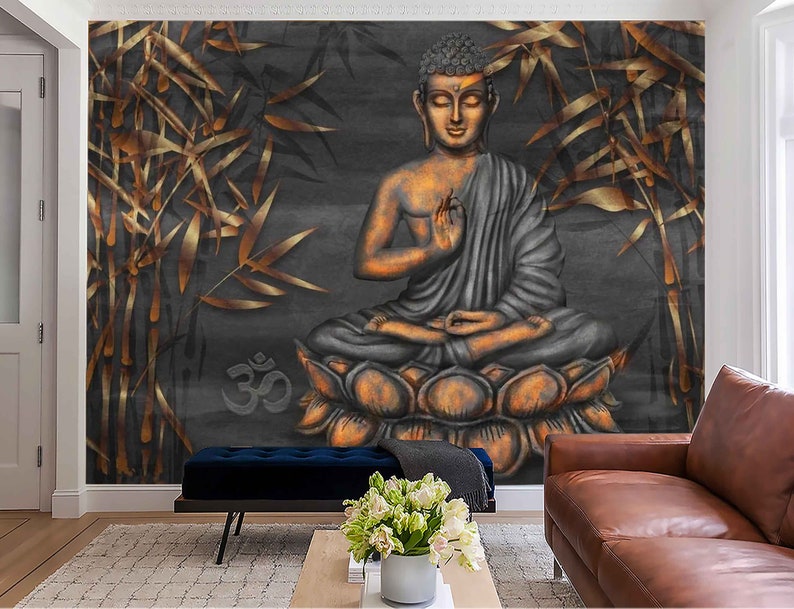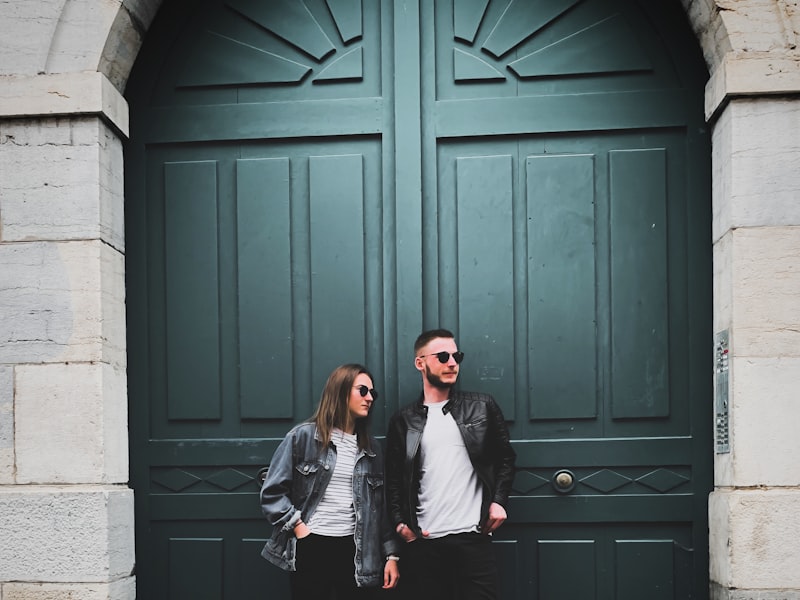SURFACE CONSIDERATIONS
Careful selection of surface for mural work should be done first. The ideal situation would allow the artist to work on a smooth surface.

If the mural is not an existing structure, but will be constructed specifically for your artwork, carefully consider the choice of building materials to be painted. For example, there are many plywood grades available. MDO plywood (Medium Density Overlay), often referred to as "sign painters board", is a high-quality plywood that is made to be used outdoors. It could also be attached to a wooden, metal or brick wall before painting a mural. This would offer the artist a surface that is clean, smooth and can be painted indoors in the studio, rather than on a scaffold at the mural site.
Meditating Buddha Wallpaper PREPARATION
Painting an Existing Surface
If factors dictate painting directly onto a pre-existing surface, preparation is a major factor in the longevity of the mural.
Mural Wallpaper must be concerned with the nature of the surface to be painted. If the surface is already painted, then consider what kind of paint it is and its physical condition (the artist should realize that any surface that still has the previous coating on it will not be as permanent as one that has been completely stripped and freshly coated). If the paint is a water-based polymer, chances are good that the GOLDEN paints will adhere sufficiently. If it is a high gloss oil paint (or of unknown materials), then it must be abraded (or removed) for good adhesion. If the existing paint film is deteriorating, then it is best to have it removed (sandblasted, power-washed, scraped, etc. ). It is critical to wash any painted surface, even a newly painted surface, with soap and water prior to application of acrylic products. Nature Wallpaper that as much as 80% of all coatings failure can be directly related to insufficient surface preparation.
Previously painted high gloss surfaces can be cleaned and dulled in one step by using a household abrasive cleaner. Wash off completely with clean water.
Mold and Mildew
Mold and mildew must be removed by hand scrubbing with a mixture of 1 part household bleach to 3 parts water. CAUTION: Never add ammonia or ammonia-based cleaners to bleach! India Wallpaper Wall Mural and protective equipment while cleaning. After scrubbing with a brush, allow the solution to sit on the surface for 10 minutes before thoroughly rinsing off with clean water.
Cracks and Grooves
If there are cracks and grooves in the substrate, the method for filling and smoothing these gaps will depend on the nature of the substrate itself. Artists should consult an area architectural coatings store for recommendations on the best product available.
Priming the Surface
Once the surface has been cleaned, a primer coat will give better adhesion for the paint.
One key feature to look for in a primer is whether or not it can be painted over by latex (waterborne) paints. This should ensure that the primer will be a compatible surface for the adhesion of GOLDEN waterborne acrylics.
To determine the best primer1 for a specific surface, we suggest artists contact a local supplier of architectural coatings. Such companies have extensive experience with priming the broad spectrum of building supplies, and typically have specific primers for the surface the mural is to be painted on. Their recommendations will also take the environmental concerns of the area into account. We have found that architectural and maintenance paints are competitively priced, meaning that a product that costs more than a similar product will typically perform better as well.
When painting on Trending Nature wallpaper , concrete, or other masonry surfaces, it is recommended to also use a Masonry Conditioner that can be purchased from a commercial coatings supplier.
3D Buddha Mural Wallpaper are some of the most durable paints for exterior application.
Acrylics are some of the most durable and accessible paints for exterior application, used by many artists for painting murals due to their lightfastness and weather resistance. They also form an excellent bond to masonry or cementous surfaces. Modern Home Wall Decoration are a poor choice for painting on these surfaces since the alkalinity of concrete can destroy alkyd or oil products. Ethyl-Silicate paints form an excellent and permanent bond with brick or concrete; however, this system can be time-consuming and costly, and good working knowledge of the system is required as well. 3D Buddha Wallpaper -based enamels are a good choice for durability, but manufacturer's pigment considerations are usually not the same as with a high-quality artist's acrylic paint.
Golden Artist Colors produces several lines of paint that can be used for mural work.
Gessoes, Molding Pastes, Matte Paints and Matte Varnishes are not recommended for exterior use.
Transparent or translucent gels or textured gels, should only be used in an exterior setting when mixed with acrylic paint.
GOLDEN Heavy Body, MSA, Fluid and High Flow Acrylics can all be used for mural work. Selecting which type of paint to use is dependent on each artist"s style and the surface to be painted. The artist must determine if the texture will influence the way he or she paints. For example, if painting on brick, it will be tough to get a smooth line brushed on with the Heavy Body Colors as is. They need to be thinned with GAC 200 (which also increases film hardness and potential durability) or the artist may consider switching to the Fluid Colors. The thinner consistency will allow the paint to flow into the crevices of the brick. (Refer to the chart below for selecting a suitable paint line).
